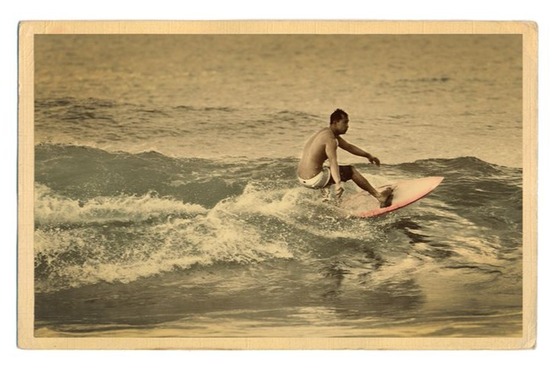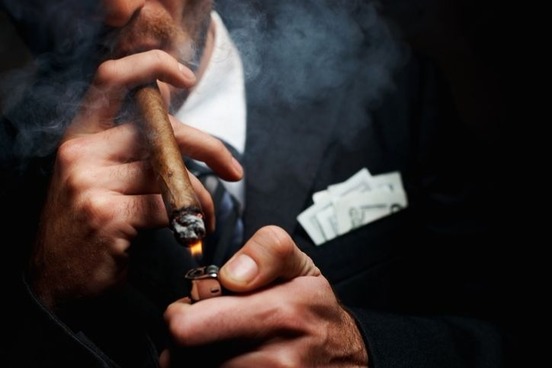
Top banana
The term top banana slipped into American slang in the first half of the 20th century as the name for the leading comedian in a burlesque show. In short time, its meaning extended to the leader or most important person in any group or undertaking.
Top banana in the maternity ward, but he was tired of his routine and glad again to bow himself out and be on his way.
— J. F. Powers, Wheat That Springeth Green, 1988Vroman has been one of the top bananas on Broadway since her career-making "Phantom" run….
— Andrew Gilbert, The San Francisco Chronicle, 14 Sept. 2017
The origin of top banana lies in a double-talk routine involving three comedians in which the one that gets the punch line gets a banana. Comedian Phil Silvers, who starred in the Broadway show Top Banana in 1951, credited Harry Steppe with introducing the term to showbiz, but there is no known evidence substantiating the claim besides hearsay.
The foil for the top banana is known as the second banana—a term that also came to be broadly used in reference to a person in a subservient position. The third comedian in the routine is the third banana, but that name never split from showbiz.

Kingpin
Kingpin can refer to a bowling pin (i.e., the headpin) that stands foremost in the arrangement of pins; technically, though, the kingpin is the number 5 pin in the middle of a triangular arrangement. Additionally, kingpin is the name of a large bolt (i.e., the kingbolt) that, in the past, was used to connect wheels to a vehicle's axle or the parts of a railroad car. It is not known for sure which application had the bigger influence on the word's figurative use, but during the mid-19th century, people began pinning kingpin to people or things that hold a chief or prominent place in a group or undertaking.
Its stock had been kicking about on the market for about fourteen dollars a share, and at this figure a controlling interest in the property had been acquired by a syndicate, of which Peter Idlewild was the king-pin.
— Robert Grant, An Average Man, 1884
Considering that the metaphorical kingpin also holds together a complex system or arrangement, the "bolt" sense seems the likely source.

Boss
Dutch baas, meaning "master," first shows up in Colonial America in the 17th century. By the 19th century, the word was adopted into American English as boss and employed as a word for a work foreman, supervisor, or manager.
By the early 19th century, language commentators, including American frontier author James Fenimore Cooper, viewed the word with distaste, although members of the working class embraced it readily. Part of the success of boss seems to be from an American aversion to the word master, with its aristocratic associations and connotations of subservience—not to mention, it was commonly used by the British.
The 19th century was a productive time for boss in America. It began being applied outside of traditional labor as the name for a criminal gang leader as well as a political dictator. The political use got a big boost from the notoriety of William "Boss" Tweed—a corrupt politician who controlled the politics of New York in the second half of the 19th century.
Boss was also respectfully employed as a word for someone who does something well. That sense is usually used attributively, as in "boss carpenter" and "boss shoemaker," where it indicates a person possessing high skill at a trade or craft. Boss also acquired general connotations of excellence, and by the end of the 19th century, it was established as a noun for things of a superior kind as well as an all-purpose adjective meaning "excellent" or "first-rate."
"Think of her," replied Ned; "I think she's the longest, strongest, prettiest, and costliest craft that ever left the Brooklyn Yard. She's the boss of the navy—she'll be the Queen of the China Seas!"
— George R. Willis, Light and Shadows of Our Cruise in the U.S. Frigate "Tennessee", 1878"It's fine here," went on the garrulous urchin; "this is the boss place, you bet. I've got a job clearin' off the tables. We have fun stealin' puddin', and everything."
— William Henry Bishop, The Atlantic, March 1885

Big enchilada
An enchilada is a Mexican tortilla rolled around a savory mixture usually of meat or beans and covered with chili sauce and cheese. Surprisingly, the food turns up in a notably unsavory context: the 1973 Watergate tapes. In a conversation with then-President Richard Nixon, Bob Haldeman—an aide to Nixon—mentions that former Attorney General John Mitchell will not get immunity because "he is as high up as they've got." John Ehrlichman, a presidential advisor, concurs with Haldeman, saying "He's the big enchilada," meaning Mitchell is an important person in the investigation. Ehrlichman's statement is the earliest record of "the big enchilada" used metaphorically, so it is likely he coined the phrase.
Another expression applying the food's name is "the whole enchilada" (or less commonly "the full enchilada") which is synonymous with "the whole ball of wax"—in other words, it means "everything." That expression is slightly older than the "big" one.
Faye Dunaway as Bonnie Parker is terrific, a future star, no doubt about it. At first Faye seems a little glamourized, but soon you buy the whole enchilada—Bonnie's boredom, the cheap quick thrill of the movie's startling beginning, the couple's fateful entrapment, the downhill roller-coaster ride to death.
— The Film Daily, 1967

Kahuna
In Hawaiian, kahuna can refer to a priest or shaman, or to someone who is a master at a craft (as canoe making) or knowledgeable in a vocation (as medicine or law). The etymology of the word is not certain. Some argue that it is based on Hawaiian kahu, meaning "caretaker," and implies a keeper of knowledge; others suggest it is from huna, which connotes something concealed or hidden, such as esoteric knowledge.
Surfers picked up the term in the 1950s as a moniker for someone who is an expert at riding the surf. That slang meaning was popularized by the romantic beach musicals and comedies of the time—in particular, the 1959 film Gidget, which features the hunky "Great Kahoona."
Today, the word has drifted from its traditional Hawaiian meanings, but it still carries the sense that someone or something is outstanding or important.
Personally I'd like to see her get into politics. Why not run for president? But first I'd like to see her break every record—to be the big kahuna.
— Billie Jean King, quoted in Vogue, February 2018Of course, the big kahuna of GPS apps is personal navigation. We'd be lost without it.
— Kevin Maney, Newsweek, 27 June 2014

Bigfoot
The name Bigfoot tends to conjure blurry images of a tall, hairy creature with long arms, a slightly pointed head, and, well, big feet. The creature's name dates to the 1950s, but print evidence goes back to the early 1800s in reference to humans having monstrous feet.
In 1980, language commentator William Safire observed an off-kilter use of the name. Bigfoot, he noted, was being applied as "a jocular term for a columnist, editor, or journalism celebrity who deigns to mingle with the working stiffs." He later connected the origin of this slangy sense to "when Hedrick Smith of the New York Times, with his foot in a cast, joined the press plane in the 1980s campaign." Supposedly, a colleague jokingly called Smith "Bigfoot." Whatever the case, the name caught on as a designation for a celebrity reporter or columnist and has since extended to include other big shots in politics, business, and other playing fields.
The local people figured we were some big-deal campaign honcho and two press Bigfoots.
—Peter Tauber, The New York Times Magazine, 31 May 1987He roams the West Wing alleys as a freelance. "I have a great job," he says convincingly. He is a frequent presence in Oval Office meetings, spending blocks of time with the president. "George [Stephanopoulos] really is the Bigfoot he's perceived to be because he spends so much time with the president," says a White House aide.
— Francis Wilkinson, Rolling Stone, 11 Aug. 1994The perks of alpha bloggers—voluminous traffic, links from other bigfeet, conference invitations, White House press passes—are, in theory, bequeathed by a market-driven merit system.
— Steven Levy, Newsweek, 21 Mar. 2005
Additionally, the verb bigfoot stomped into American English with the meaning "to use one's power or status to treat (someone) in an overbearing or domineering way."
He was also a shameless air hog who would bigfoot any correspondent on any story at any time.
— Jon Katz, Rolling Stone, 14 Oct. 1993If Daimler is contributing 57 percent of the stock market value to a merger and Chrysler 43 percent, it's pretty clear who is going to call the shots. And Daimler did indeed bigfoot Chrysler, not just in the new company's logo but everywhere. Headquarters would be in Stuttgart; it was a German "A.G.," not an American "Inc."
— Peter Schneider, The New York Times Magazine, 12 Aug. 2001

Bigwig
In the 14th century, wig referred to a cake of Dutch origin; three centuries later, people were covering their heads with the wigs that we commonly think of today, the name of which is a shortening of periwig, which referred to a natural head of hair before denoting an imitation of hair. The source of periwig is Middle French perruque, which is suspected to be related to perroquet, the French name for the parakeet.
Bigwig relates to the specific idea of wigs signifying power, and the wearing of wigs goes back thousands of years. Archaeologists have uncovered evidence of wigs being worn by the ancient Egyptians. The term bigwig as used in English to mean a person of importance, however, has its origin in Europe, where wearing wigs, especially by men, became an aristocratic trend in the 17th century. The wigs were often very large and elaborate and became a symbol of status and importance. In time, the wigs eventually became smaller and simpler, but by then the word bigwig, which was first recorded around 1700, was already established in reference to powerful individuals who wore wigs. Today's bigwigs don't usually wear wigs (and might not admit it if they did), but they do have power.

Kingfish
Kingfish has long since been a name for various kinds of fish notable for their size and value as food. In the 1920s, the name of the fish—perhaps influenced by earlier use of big fish as a name for an influential person—came to refer to an undisputed master in an area or group. The most famous was U.S. politician Huey P. Long, who was elected governor of Louisiana in 1928 and state senator in 1930. His domineering ways in politics earned him the nickname Kingfish.
The title of Robert Penn Warren's 1946 novel All the King's Men is derived from Long's slogan "Every man a king," which he used as a catchphrase to promote his "Share the Wealth" program; in addition, Warren’s character Willie Stark is based on Long, who was regarded as a demagogic and dictatorial politician. Long hoped to eventually win the presidency, but his ambitions were cut short when he was assassinated on September 8, 1935.
Today, formidable kingfish still roam political waters.
Senator Al Gore will emerge this month as the announced favorite of key Southern Democratic senators, party leaders and local officials. The kingfish he wants to catch is Senator Sam Nunn of Georgia.
— U.S. News & World Report, 11 Jan. 1988But Castro outlasted nine U.S. presidents, and the Kingfish has lived on through a seemingly endless series of movies, plays and books.
— S. L. Price, Sports Illustrated, 3 Mar. 2008

Big shot
Big shot was added to the arsenal of American English in the early 20th century as a term for a person of consequence or prominence, and in the 1920s and '30s, it came into vogue as a nickname for notorious criminals.
The belief that [Al] Capone will be able to keep out of the penitentiary for a year, possibly two years, is based on substantial precedent. Ralph Capone, younger brother of the "Big Shot" was convicted of income tax evasion in April, 1930, but still has his freedom.
— Meyer Berger, The New York Times, 19 Oct. 1931Big Jim Colosimo was the Big Shot in those days, a politician and dabbler in innumerable shady but profitable enterprises.
— Edwin Conger Hill, The American Scene, 1933
Earlier in the same sense, great shot was being used across the Pond.
The great "shots" of Stanz parade the town with their prizes in their hats….
— George Meredith, letter, 9 July 1861
That expression comes from the notion of someone shooting a gun proficiently, and it is possible that big shot developed in the same way. Another name for an important person that is connected to gunnery is big gun, which appears decades before big shot.
Undoubtedly, the point to which all eyes are turned … is the city of Washington. The big guns of the nation are there….
— The New-York Mirror, 1834 June 14
Big gun originated as a synonym of centuries-old great gun, the name for a piece of heavy artillery that, in the 17th century, also came to be used in figurative contexts to denote people who, like the gun, made an impact.
One might speculate that big shot is a blend of big gun and great shot, but we can't be sure that hits the mark.

Top dog
Top dog refers to a person in a position of authority that he or she earned through victory in a hard-fought competition. The moniker originates from an allusion to dogfighting in which the dog on top of another is in an advantageous position. Figurative use of top dog dates to the late 19th century, when people were also "sympathizing with the bottom dog" and giving "the underdog a chance."
Organized religious bodies can work indirectly by influencing employers of labor to regard applications coming from a discharged prisoner with favor, thus inculcating a spirit of charity for the "under dog."
— Proceedings of the Annual Congress of the National Prison Association of the United States, 1894





